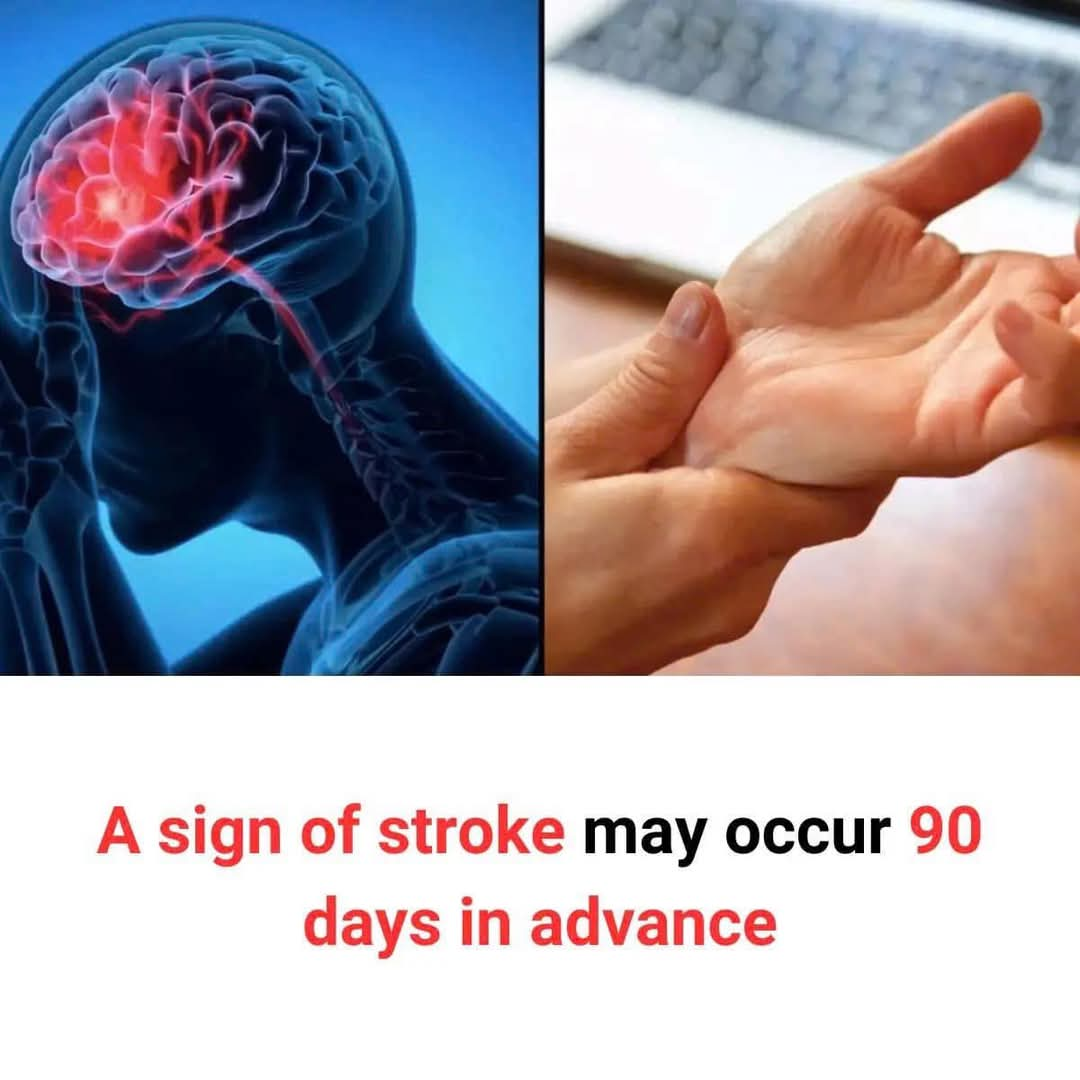A Sign of Stroke May Occur 90 Days in Advance – Don’t Ignore This Early Warning

Many people believe strokes happen suddenly, without warning. But what if your body was already giving you signs — up to 90 days before the actual event?
Recent medical studies and real-life cases have revealed that one of the earliest warning signs of an impending stroke may show up months in advance, and recognizing it in time could save your life.
The Silent Clue: Transient Ischemic Attack (TIA)
Known as a “mini-stroke”, a Transient Ischemic Attack (TIA) is often the body’s first red flag. Unlike a full stroke, a TIA is temporary — it may last a few minutes or up to 24 hours — but it’s a serious warning.
Research shows that nearly 1 in 3 people who experience a TIA will suffer a major stroke within 90 days, especially if they don’t seek treatment.
Common TIA Symptoms to Watch For
These symptoms often appear suddenly and then vanish, which is why many people dismiss them:
- Sudden numbness or weakness in the face, arm, or leg — especially on one side
- Confusion or trouble speaking or understanding speech
- Blurred or blackened vision in one or both eyes
- Difficulty walking, dizziness, or loss of balance
- A sudden, severe headache with no known cause
Even if symptoms disappear quickly, you must treat them as a medical emergency.
Why the 90-Day Window Is Critical
Doctors say that a TIA provides a unique opportunity: a chance to prevent a devastating stroke. With the right treatment, lifestyle changes, and medication, up to 80% of strokes can be prevented.
But the key is timing — ignoring TIA symptoms could mean losing your only warning.
Who’s at Risk?
- People over 50
- Those with high blood pressure or diabetes
- Smokers
- Individuals with a family history of stroke
- Women on birth control, especially smokers
- Those who suffer from migraines with aura
If you’re in any of these groups, don’t ignore mild symptoms, especially if they’re unusual or sudden.
What to Do Immediately After a Suspected TIA
- Call emergency services — don’t wait for it to “pass.”
- Get tested — a CT scan, MRI, and blood work can detect the root cause.
- Follow up with a neurologist to assess stroke risk and begin prevention.
- Change your lifestyle — control blood pressure, cholesterol, sugar, and avoid smoking.
Final Thoughts
Your body whispers before it screams.
A stroke doesn’t always hit out of nowhere — sometimes, it taps you on the shoulder three months before.
A TIA is your 90-day countdown to take action. Don’t ignore it. Recognize the signs, seek help fast, and give yourself a second chance.
FAQs
Q: Can a mini-stroke be painless?
Yes, many people don’t feel pain — just numbness, confusion, or brief visual changes.
Q: What tests diagnose a TIA?
Doctors usually perform a brain scan, heart test (ECG), and carotid ultrasound to detect blood clots or narrowing.
Q: Can TIAs happen during sleep?
Yes. Some people wake up with symptoms or realize something was “off” the night before.






